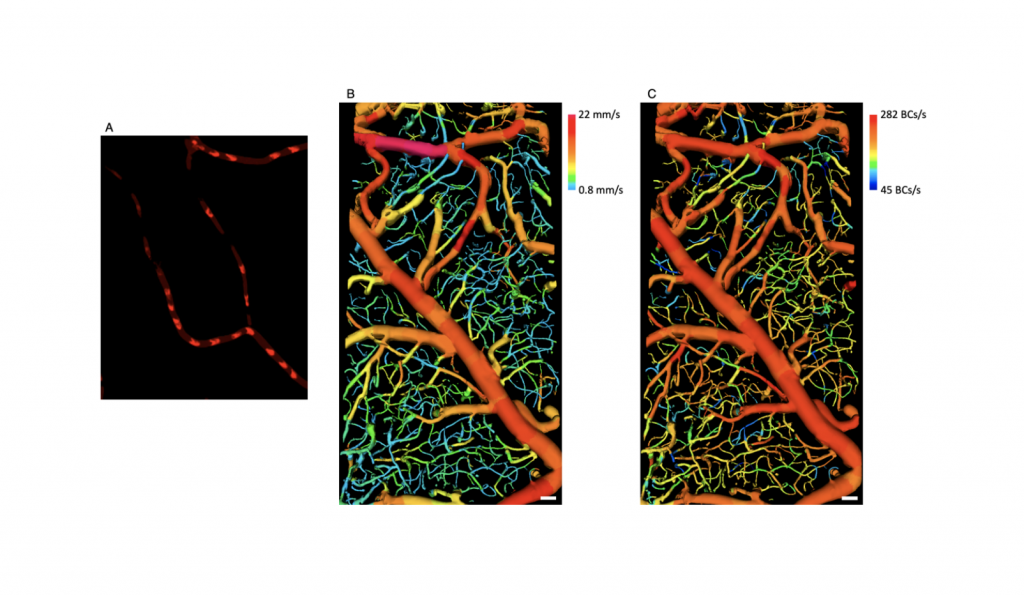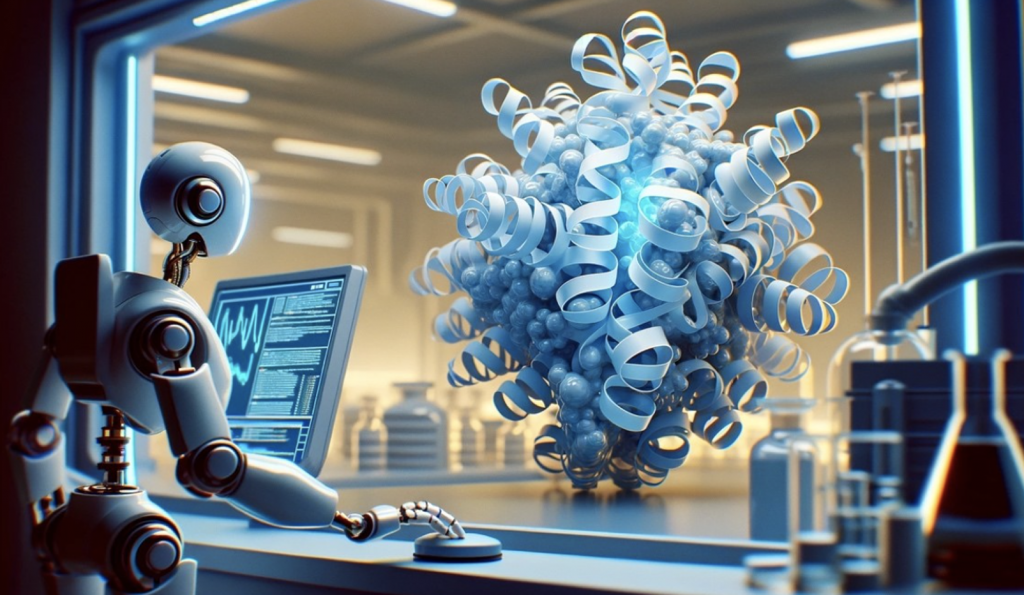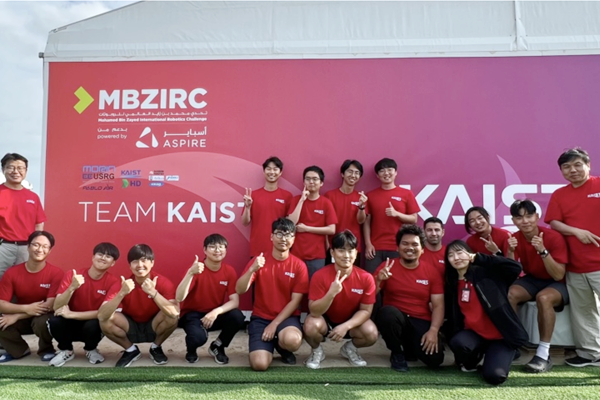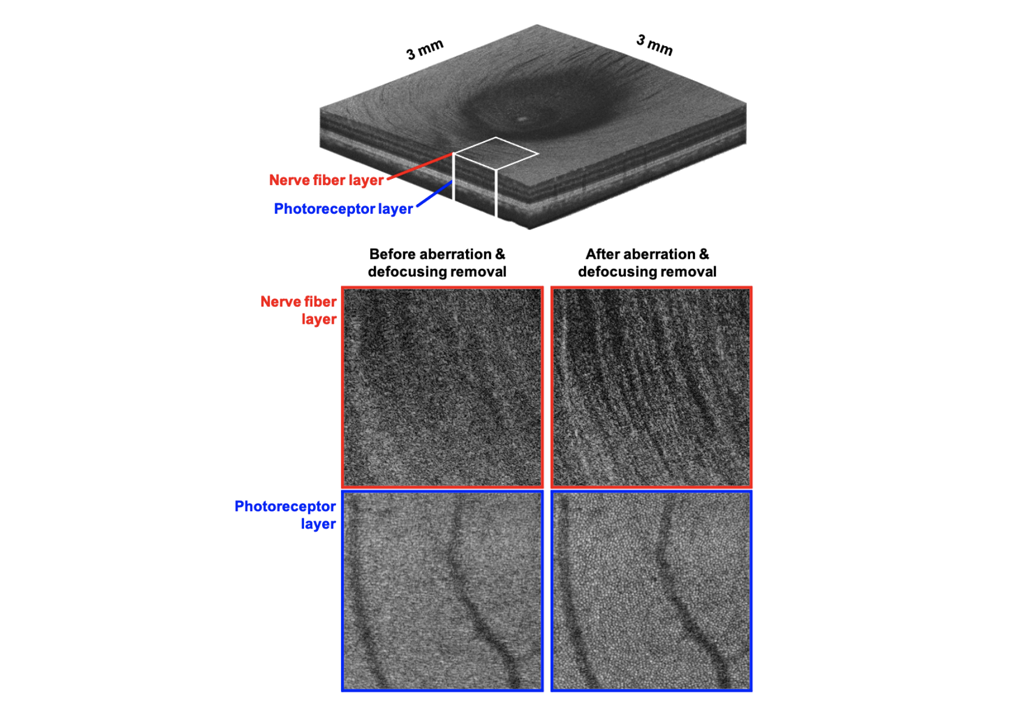-
Research Highlight
Proximity Perception-Based Grasping Intelligence: Toward the Seamless Control of a Dexterous Prosthetic Hand
A novel perception system, the proximity perception-based grasping intelligence (P2GI) system, has been developed to enhance the dexterity of prosthetic hands, closely mimicking human hand functionality. Utilizing embedded proximity sensors and a real-time decision-making algorithm, the P2GI system accurately maps the point cloud of an object and infers the user’s intended grasp posture, achieving a high accuracy of grasp posture classification and a high rate of task success. This advancement promises significant improvements in prosthetic hand control, potentially broadening the application of highly dexterous prosthetic hands in everyday tasks....read more
-
Research Highlight
Direct Blood Cell Flow Imaging in Microvascular Networks
Prof. Wang-Yuhl Oh’s group has developed, for the first time, an imaging technology that visualizes blood cells flowing in complex three-dimensional vascular networks without using any contrast agent. ...read more
-
Research Highlight
Artificial Intelligence to discover hidden enzymes
A joint research team composed of members from KAIST and UCSD developed an artificial intelligence that predicts enzyme functions from protein sequences....read more
-
Research Highlight
Enabling E2E Privacy Enhancing Technology: Hardware Acceleration for Torus Fully Homomorphic Encryption (TFHE)
The research team led by Prof. Joo-Young Kim at KAIST ITC has developed Strix and Morphling, accelerator designs for Torus Fully Homomorphic Encryption Schemes, addressing the computational bottleneck in bootstrapping using various techniques such as ciphertext batching and transform-domain reuse....read more
-
Research Highlight
Current-Shared Multi-Phase FIVR (Fully-Integrated Voltage Regulator)s with Phase-Shedding-Optimized techniques
The research team led by Prof. Kim at KAIST ITC has developed a fully integrated multi-phase buck converter for on-chip power management unit that evenly balances the multiple inductor currents without significant power overhead. It also achieves an even more optimal frequency response and output ripple with optimized phase-shedding techniques....read more
-
Research Highlight
Two-Year Journey of Team KAIST to the Finals of MBZIRC 2023
Team KAIST, comprising students from the labs MORIN (of Prof. Jinwhan Kim) and USRG (of Prof. Hyunchul Shim), in partnership with PABLO AIR, won the 2nd Place Winner position in the MBZIRC Maritime Grand Challenge, one of the world’s largest robotics competition....read more
-
Research Highlight
Navigation Safety of GNSS/IMU Integrated System for Autonomous Vehicles
Prof. Lee's group has developed an algorithm to ensure navigation integrity against Inertial Measurement Unit (IMU) sensor faults for safety-critical GNSS/IMU integrated navigation applications....read more
-
Research Highlight Top Story
High-resolution quantitative X-ray phase nanoimaging based on cutting-edge optical imaging methods
Prof. Park’s group has developed a novel high-resolution quantitative X-ray phase imaging system that can overcome two long-standing challenges in X-ray nanoimaging: the limitations in image resolution and the instability of phase retrieval methods. They applied optical imaging techniques that they have recently developed in the same group. The imaging systems have been successfully tested in both synchrotron source and X-ray free-electron laser facilities at Pohang Accelerator Laboratory....read more
-
Research Highlight
Wide-Field Three-Dimensional Depth-Invariant Cellular-Resolution Imaging of the Human Retina
Prof. Wang-Yuhl Oh’s group has developed, for the first time, a cellular-resolution imaging technology in a wide field human retina at all three-dimensional locations....read more
-
Research Highlight
Energy-Efficient Electrified Direct Air Capture (e-DAC)
"Electrified Fiber Sorbent" by Prof. Dong-Yeun Koh’s group offers a breakthrough in Direct Air Capture (DAC) technology, using electricity for efficient sorbent regeneration. Recognized by an RD100 Award, it is a step towards "Negative Emissions."...read more

291 Daehak-ro Yuseong-gu Daejeon, 34141, Republic of Korea
Partnered with KAIST Breakthroughs and KAIST Compass










